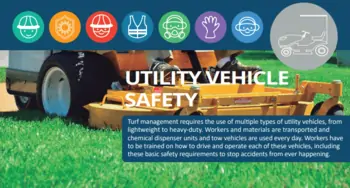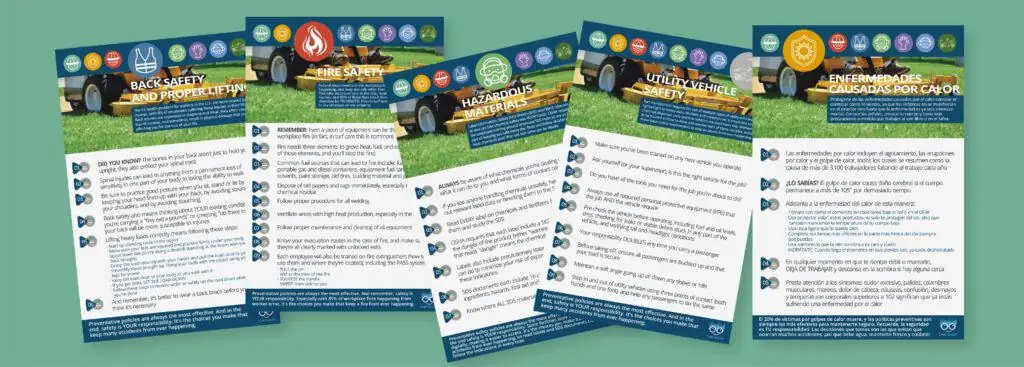
Safe utility vehicle operation is always a part of the job when it comes to turf management. From lightweight to heavy duty, you will come across a variety of utility vehicles on the clock. Because workers and working materials are transported every day, it’s imperative to know your way around utility vehicles.
Whether you’re operating a dispenser unit or a tow vehicle, you must know the vehicle’s basic safety and operation functions. The only way to prevent accidents from happening is by educating yourself on vehicle inspection, training expectations, Occupational Safety and Health Administration (OSHA) standards and passenger safety. Only then will you be ready to safely operate a utility vehicle.
Before operation
Proper training is essential before operating a new utility vehicle. Before operating any utility vehicle for the first time, make sure you’ve been trained in on each of the following:
If you are unsure about any of these items, or if you’re unsure whether you’re using the right utility vehicle for the job, ask your superintendent before operating the vehicle. They will guide you through any holes in your knowledge and assist you in making the safest choices.
As a side note, always confirm that you have every tool you’ll need for the day’s job before you begin. This includes making sure you have all personal protective equipment (PPE) that both the job and the vehicle require. Preparedness is key.
Pre-checking your vehicle
According to OSHA, all vehicles used on the turf must be checked at the beginning of each shift. To comply with OSHA standards, thoroughly check every vehicle to make sure the following parts are free of outward damage and are in safe operating condition:
In addition, you’ll also need to check fuel and oil levels, tail and headlight conditions, and check for leaks or visible debris stuck in any part of the vehicle. Safety should always be our utmost priority, and carefully inspecting your vehicle before operation is the best way to keep everyone on the turf safe.
Passengers
Your responsibility doubles anytime you are carrying a passenger. Passenger safety is literally in your hands. Make sure everyone onboard the utility vehicle is abiding by safety standards, too, namely the use of safety belts.
Let’s get into the specifics of safe operation and safety for passengers. All persons in the vehicle should follow these four rules.
Takeaways
Operator responsibility is at the heart of utility vehicle safety. Utility vehicles should be seen as tools and never toys. It only takes one oversight to result in an accident or injury. Therefore, it is up to you to prevent utility vehicle accidents before they happen.
Remember to check your vehicle inside and out before use. And come to work prepared with all the training knowledge and necessary PPE before starting a task.
And finally, comply with all OSHA safety standards and take extra care whenever a passenger is onboard a vehicle you’re operating. Utility vehicles can become deadly in an instant if safety standards are ignored or neglected. It’s the choices you make that keep accidents from happening—so buckle up, stay smart and stay safe when operating a utility vehicle this season.
